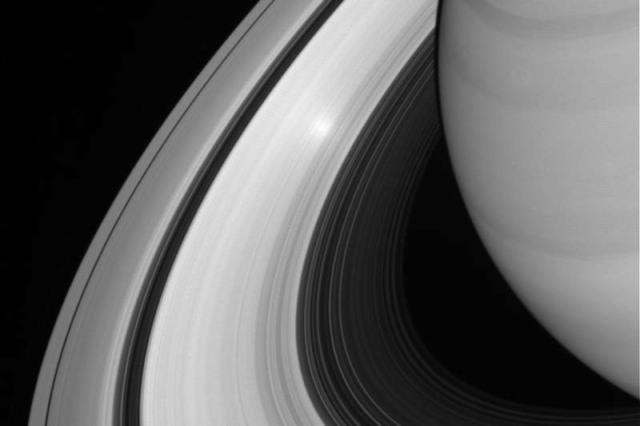Saturn’s rings formed in a violent event less than 100 million years ago, which is sort of gnarly
How long has Saturn had its rings? Not as long as we fucking thought, apparently. AstronomerWizards have concluded they originated from a violent event, somewhere between 10 and 100 million years ago.
New Scientist:
Gravity around a planet changes based on the planet’s interior structure and movement. NASA’s Cassini spacecraft measured Saturn’s gravitational field by completely turning off its thrusters during portions of five of the final orbits that took the probe between Saturn and its innermost rings.
The spacecraft’s motion while the propulsion was shut down was governed only by momentum and gravity, so measuring its movement allowed researchers to reconstruct the gravitational field of Saturn and its icy rings.
The measurements indicated that the winds that blow around Saturn’s equator extend much deeper into the plant’s lower atmosphere than we thought. “All the models we had done before were wrong,” says team member Burkhard Militzer at the University of California, Berkeley. “It’s not just a thin layer of clouds, it’s deep flows that extend 9000 kilometres below the cloud tops.”
Read more: Cassini’s Grand Finale: The spacecraft that unveiled SaturnThey also found that Saturn’s rings have a total mass of about 15 billion billion kilograms, about 4700 times less massive than Earth’s moon. This confirms Cassini’s earlier measurements of the rings’ mass, which were based on changes in their apparent density. Those earlier measurements could, in theory, have missed some hidden mass but it now seems likely that they didn’t.
Combined with measurements of dust falling into the rings, a lower mass means that they are likely relatively young. They probably formed from a violent event – smashed moons or a shredded comet – in the last 10 to 100 million years. That makes them much younger than Saturn itself, which formed about 4.5 billion years ago.
“It could mean there was a giant collision 100 million years ago, which means there could be another collision tomorrow,” says Militzer. “We think that our solar system is not a very violent one, but it may not be as stable as we think it is.”




